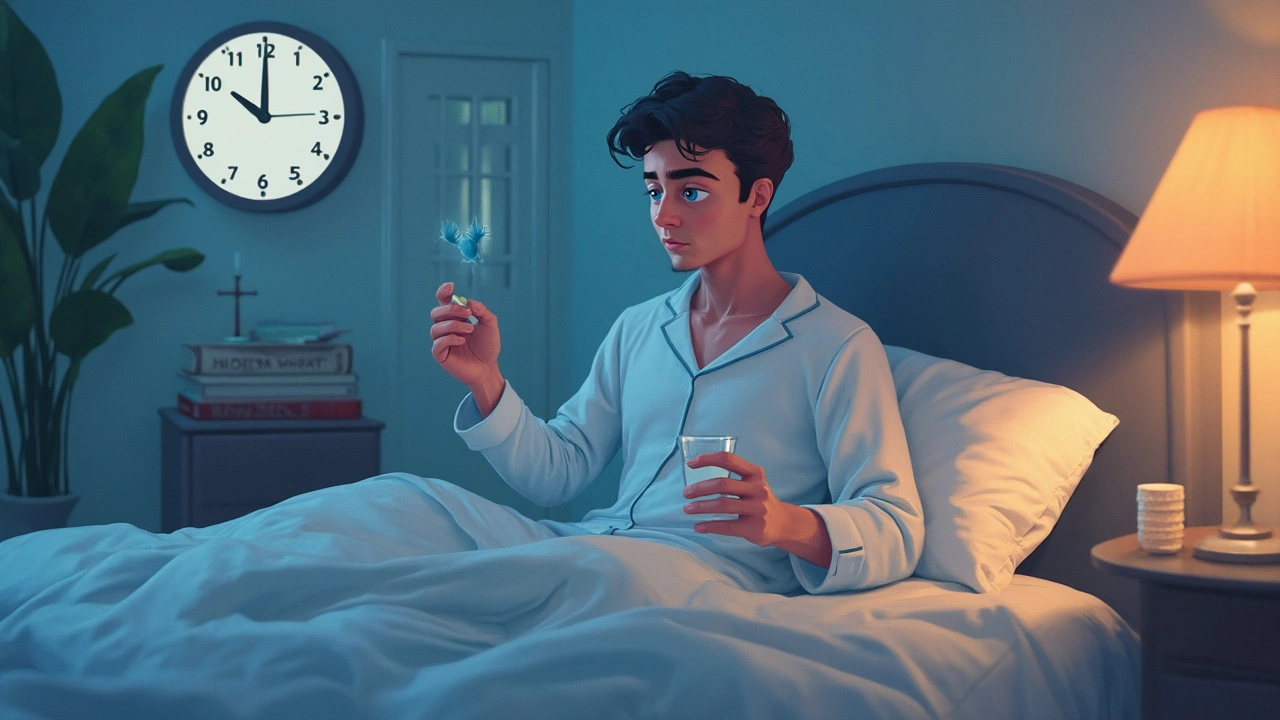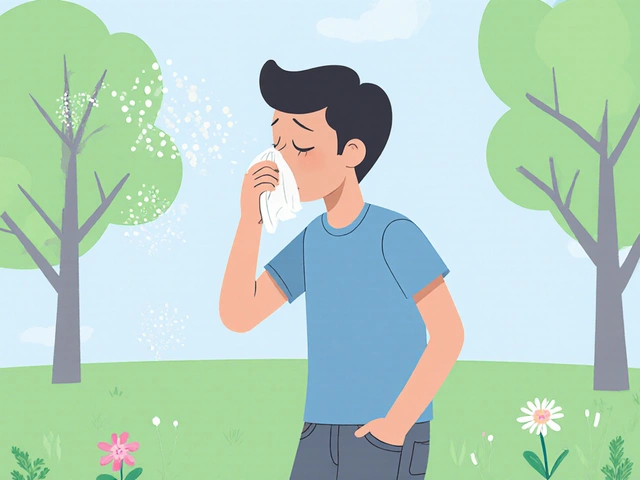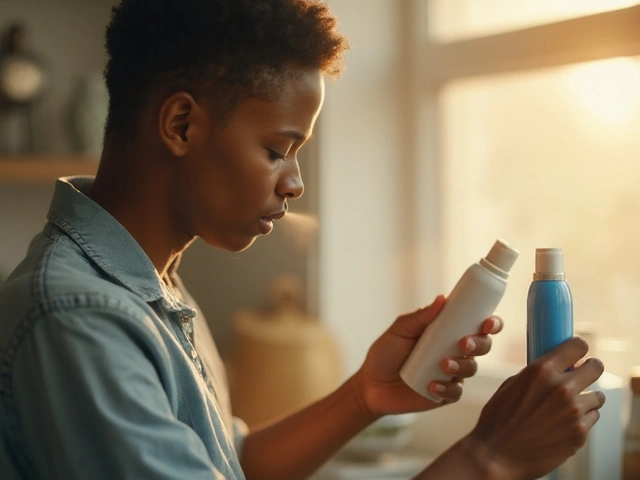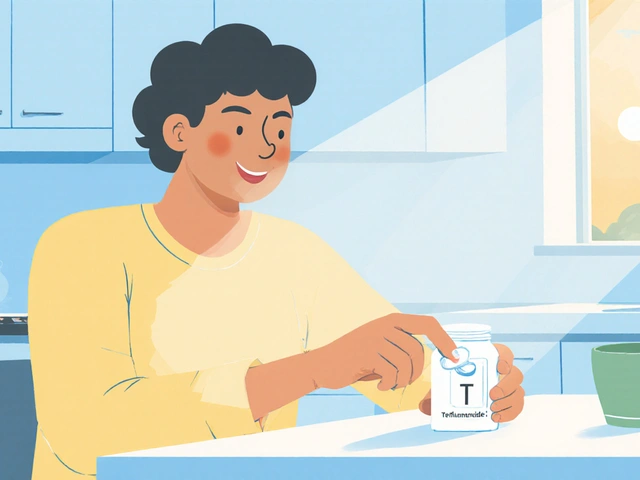It’s midnight. You lie awake, itching, tossing, turning, getting frustrated by the minute. For anyone caught in the relentless grip of night-time itch, sleep turns into a distant dream. That’s why a lot of people reach for hydroxyzine—a powerful, doctor-prescribed antihistamine. The right hydroxyzine dosage not only puts itchy skin to rest, but can also help you *actually* get some shut-eye. This isn’t just a random opinion; hydroxyzine has been trusted for decades as a go-to for severe itch and hard-to-beat insomnia.
How Hydroxyzine Kicks Itch (And Makes You Sleepy)
Hydroxyzine works double duty in your body: it calms overactive skin nerves and also chills out your brain’s sleep center. It blocks histamine—the chemical riling up your immune system and making you itchy. Unlike some other antihistamines, this one also quiets anxiety signals, so you’re not just itch-free, but also drowsy.
Let’s cut to what everyone really wants to know: how fast does hydroxyzine work? In most cases, you can expect relief in about 30 to 60 minutes. But timing your dose is the real game-changer. If you take it too soon, you’ll be groggy before you even hit the pillow. Wait too long, and you might still be scratching away while the rest of the house is sleeping. Most doctors recommend popping your dose 30–60 minutes before bed.
Here’s something interesting: the official FDA guidelines mention 25 mg to 100 mg once at night for adults. Some people are extra sensitive, though, and find they get knocked out with just 10 mg. Always start low—trust me, nobody loves a sleep hangover. For children, dosage needs are very different and you should always check guidelines before giving it to kids; for verified info, check this detailed post on hydroxyzine dosage for sleep child.
If you’re the stats kind of person, check the table below for typical hydroxyzine sleep dosages:
| Age Group | Initial Dosage for Sleep | Max Dosage per Night |
|---|---|---|
| Adults | 10–25 mg | 100 mg |
| Teens (over 12) | 10–25 mg | 50 mg |
| Children | Check pediatric guidelines | Check pediatric guidelines |
It’s not a ‘more is better’ situation. Too much, and you’ll just wake up feeling spaced out the next day or be at risk for unwanted effects. That’s why docs always urge patients to go with the lowest effective dose that stops the itching.
Navigating Grogginess and Day-After Effects
If you’re using hydroxyzine just for night-time itch, the last thing you want is to spend the next day feeling like a zombie. The hangover effect is real for some people. Ever tried to make coffee with your keys? That’s hydroxyzine overhang in action.
Grogginess is more likely if:
- You take a higher dose than necessary
- Take your dose too close to bedtime (so blood levels peak later in your sleep)
- You’re older — adults over 65 are more sensitive
- You’re taking other sedating meds
The best way to dodge the morning fog is to stick to 25 mg or less, and never take it within 15 minutes of lying down. If you notice you need 50 mg or more to control night-time itch, talk to your doctor; there may be better options or hidden triggers raising your skin issues.
Here’s a key tip: Hydrate like you mean it. Hydroxyzine can make your mouth dry, and mild dehydration makes mental fog worse. Keep water at your bedside and sip before you sleep. Also, no alcohol—booze just makes sedation, confusion, and risky slips so much worse.
Most people find hydroxyzine’s sedative effect is strongest the first few nights, then becomes less dramatic. Your body slightly gets used to it, but don’t expect it to fade completely. If you work early mornings or drive heavy machinery, hydroxyzine could be a dealbreaker.
The British Association of Dermatologists published a piece in 2024 warning about “morning-after impairment” with first-generation antihistamines like hydroxyzine, especially for adults with demanding jobs. They wrote:
“Patients should be made aware that sedating antihistamines can impair alertness into the following day, which may affect driving, work performance, and safety.”
This is not just theory—it’s a real risk. Always wait to see how you react to hydroxyzine the first time, and don’t plan major concentration-demanding stuff the next morning.

Safe Duration: How Long Is Too Long?
Hydroxyzine is a lifesaver if you need itch relief for a night, a week, or even a month. But what about long-term use? Recent research shows the drug is designed for short periods—think acute rashes from allergies, poison ivy, or flare-ups in eczema—not as a year-round nightly sleep aid.
Long-term use increases certain risks. You may develop tolerance to the sedative part, so higher and higher doses are needed for the same effect. Plus, the longer you use it, the more likely you’ll run into side effects like dry mouth, constipation, and blurred vision. The scary risk is heart rhythm changes, especially if you already have a heart condition or take other meds that prolong something called the QT interval (ask your doctor if you’re unsure what that means).
The reality is, hydroxyzine isn’t addictive the way some sleeping pills are, but you could get used to depending on it, and coming off suddenly may bring back wild itch or rebound insomnia. Generally, dermatologists recommend using it in bursts—say, two weeks at a time—then taking a break if you can. If you find yourself needing hydroxyzine for sleep week after week, that’s a sign to go back to your doc for a better plan.
If you live with chronic skin issues, focus on treating the root causes: use thick moisturizer after a lukewarm shower, avoid crazy hot water, and pick gentle fragrances in soaps. Hydroxyzine works best as backup, not your primary daily defense.
Tips for Getting the Most Out of Hydroxyzine for Night-Time Itch
When hydroxyzine is used smartly, it’s a powerful itch-busting and sleep-giving tool. Here’s how to get the best results with the fewest headaches:
- Treat the source first: Address allergies, eczema, or infections if possible.
- Stick with the lowest dose that stops itching so you’re less sedated.
- Set a timer: Take it 30–60 minutes before you want to be asleep, not at the first sign of itch.
- Keep a water bottle at your bedside for dry mouth.
- Avoid combining hydroxyzine with other drugs that make you sleepy.
- Skip alcohol; it doesn’t mix well with sedating antihistamines.
- If you’re over 65, talk with your doctor first. There are safer options for older adults.
- If you get vivid dreams or next-day drowsiness, try taking it earlier in the evening, or lower your dose.
- If you’re using hydroxyzine for your child, check dosing guidelines (here’s the link for hydroxyzine dosage for sleep child info).
- Don’t use hydroxyzine for months straight without breaks—it’s for short-term help while you figure out your main triggers.
If after a week or two you’re still itching like mad at night, there could be something else going on. Some skin conditions, like chronic urticaria, need a different class of treatment. Hydroxyzine isn’t a magic bullet for every itch out there.
If you want the science-y breakdown, hydroxyzine is mostly cleared by your liver and takes about 20 hours to fully leave your system. That means if you take it night after night, some effect might hang around, leading to more grogginess in sensitive people.
More people are getting info about this on forums and through friends—just make sure anything you read comes from trusted, up-to-date sources and your personal health provider. If you mix hydroxyzine with other meds (especially anxiety pills or sleeping pills), always run it past your pharmacist or doctor first.
Night-time itch can feel like torture, but using hydroxyzine properly can give you the relief and rest you’re after. Tweak your routine, listen to your body, and never be afraid to ask your doctor if something feels off. Good sleep is possible—even if you’re itchy now.







Brenda Martinez
July 18, 2025 AT 14:26Honestly, hydroxyzine is a game changer for night itching if you follow the dosage properly. The article did a decent job breaking down when to take it to avoid that groggy zombie feeling in the morning, but let me add something — make sure to avoid alcohol completely when on this med, or you’ll regret it big time. I’ve seen too many people underestimate how much hydroxyzine can knock you out when combined with other depressants.
Also, if you’re planning to use it more than a couple of weeks, definitely check with your doctor because tolerance can build, and you might need an adjustment.
On the side effects, I felt the article skimmed over some of the rarer but real issues like blurred vision and dry mouth that, while annoying, are manageable. Remember, this isn’t just a quick fix; it’s a serious antihistamine, so respect it.
What do you all think? Have any of you had trouble with the timing or side effects?
charlise webster
July 18, 2025 AT 15:00While I appreciate the insight, I’m always a bit skeptical when it comes to dosage advice without personalized medical consultation. Everyone’s metabolism and skin sensitivity differ so drastically. Some might get relief on a much lower dose, others might need adjustments that only your healthcare provider can sanction.
Also, about the timing to avoid grogginess — yes, taking hydroxyzine an hour before sleep sounds ideal, but I’ve found that sometimes it kicks in so fast that you’re just nodding off early in the evening. It’s not a one-size-fits-all scenario.
My take: read, learn, but don’t just assume these guidelines will work perfectly for you. Safety first, always.
lata Kide
July 18, 2025 AT 15:25OMG, you guys, I totally agree with the timing being tricky! 😩 When I first used hydroxyzine, I thought I’d be fine taking it right before bed, but nope — ended up sleepwalking a bit! Can you imagine? Totally scary. 😂
Also, can we talk about how annoying the dryness can be? Like, my mouth felt like Sahara desert all night long! 😖 If you’re gonna use this stuff, keep water handy at all times, trust me! 💧
And I know it’s tempting to push the dose up when the itching gets worse, but please don’t do that unless your doc says okay. Safety, y’all, safety! ❤️✨
Mark Eddinger
July 21, 2025 AT 15:13From a clinical perspective, hydroxyzine is indeed effective as an antihistamine for nocturnal pruritus, but adherence to recommended dosages is paramount. The article's emphasis on timing to mitigate morning grogginess aligns with pharmacokinetic profiles, indicating peak plasma concentrations approximately two hours post-ingestion.
However, long-term use should be approached cautiously due to potential anticholinergic effects and the risk of tolerance development. Patients should be monitored regularly, especially those with comorbidities.
It's important to remember that hydroxyzine may interact synergistically with CNS depressants, necessitating a thorough medication review.
Francisco Garcia
July 25, 2025 AT 16:26Interesting points raised here. I'm curious if anyone has experience combining hydroxyzine with other nighttime routines, like melatonin or herbal teas? I wonder if these combinations can influence the effectiveness or the side effect profile somehow.
Also, the article briefly mentioned how long it stays in your system but didn't dive too deep. I've read it can linger for up to 24 hours, which might explain residual drowsiness. Does taking it earlier in the evening lessen that hangover effect for those who have to be alert early next day?
Would love some anecdotal reports on that!
Patrick Renneker
July 26, 2025 AT 06:20In my more formal judgment, one must be exceedingly prudent when administering hydroxyzine for nocturnal itching, entirely eschewing self-medication absent rigorous medical consultation. The latent risks of misuse, especially concerning dosage timing and cumulative anticholinergic effects, demand a disciplined adherence to prescribed protocols.
Moreover, while the piece expounds on certain side effects, it insufficiently highlights the potential cognitive impairments or exacerbation of underlying conditions that might ensue from inappropriate use.
In summation, this discourse should serve as a cursory introduction and not a clinical directive.
KAYLEE MCDONALD
July 28, 2025 AT 00:00Listen, I totally get how frustrating it is to be kept awake by relentless itching. Hydroxyzine can be a solid tool for that. But please, don’t disregard the safety tips shared. You need to be careful with dosage and watch your body’s reactions.
It’s not just about knocking you out; it’s about quality sleep with minimum side effects. And if you ever feel something’s off like intense dizziness or confusion, stop immediately and seek help.
Have you all noticed if this med affects your mood or concentration the next day? I’m curious.
Alec McCoy
July 28, 2025 AT 13:53After reading through the article and all these comments, I feel there’s a lot to unpack here about hydroxyzine’s role in managing nocturnal pruritus. It's worth noting that while pharmacodynamics point to sedation as a side effect, patients might also experience paradoxical excitation, which can complicate sleep patterns further.
This suggests a need for a tailored approach with close monitoring at treatment onset.
Also, integrating non-pharmacological strategies like sleep hygiene improvements might enhance overall outcomes more sustainably.
Aaron Perez
August 1, 2025 AT 01:13Really, one must contemplate deeper the existential implications of surrendering to pharmaceutical sedation just to evade the trivial discomfort of itching. Is our dependency on these chemical sedatives not yet a sign of a more profound malaise in our lives?— an epitome of modern alienation from natural bodily rhythms and sensations!?
Though useful, hydroxyzine's pharmacological embrace entangles the psyche in lethargy itself a form of quiet despair.
Might we pursue alternative remedies rather than this cycle of symptomatic suppression?
William Mack
August 6, 2025 AT 20:06This thread has been enlightening. For me, hydroxyzine provides necessary relief, but I limit use to occasional nights when itch is unbearable. I also find supplementing with mindfulness before bed helps reduce the sensation somewhat.
Anyone tried combining hydroxyzine with other antihistamines or topical treatments? Wondering if layering could potentially increase effectiveness or risk.
Evan Riley
August 17, 2025 AT 06:06Look, I hate to throw a wrench in the works, but has anyone questioned the pharmaceutical industry's role in pushing hydroxyzine usage so strongly? Is this really the best option, or just the most marketed one? There’s a lot going on behind the scenes with big pharma interests influencing what drugs get spotlighted for conditions like this.
Could there be less hazardous, more natural alternatives being suppressed?
It's food for thought as we discuss dosage and timing.
Brenda Martinez
August 17, 2025 AT 13:53@Francisco, you bring up a great point about combining hydroxyzine with melatonin or herbal remedies. In my experience, herbal teas like chamomile can actually complement hydroxyzine — providing an extra calming effect without compounding the grogginess. But melatonin sometimes overlaps too much with hydroxyzine’s sedative effect, so I’d caution trying both at once.
@Brenda, I completely agree on the water thing, hydroxyzine dehydrates like crazy! Always keep a glass nearby.
Also to @Kaylee's point, mood can be affected for sure — around here, I've noticed some people become overly irritable or a bit depressed when using it long-term, which is something to watch.